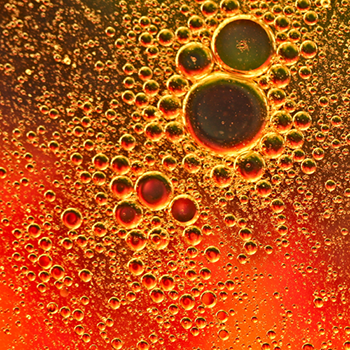The calorific value (CV) of most liquid oils can be determined in exactly the same way as solids, e.g. coal, i.e. by placing the sample in a pressurized vessel, igniting the sample and measuring the released heat in a controlled environment.
The sample is placed in the crucible: the firing cotton is then placed in contact with the sample and the vessel pressurized with oxygen.
The firing cotton is then ignited which in turn ignites the sample. The burning of the sample causes the vessel temperature to increase, this increase in the temperature is very accurately measured and this is proportional to the calorific value of the sample.
This is the method generally used for fuel oils. If the oil is viscous then an eyedropper or syringe can be used to place the oil into the crucible. If the oil is not viscous then a spatula should be used ensuring that all the sample is inside the crucible and not on the outside.
Most oils do not splatter on combustion so this method is generally acceptable, however if the oil does splatter then a cellophane cover must be placed over the crucible or the sample should be placed in a gelatin capsule. The cover or capsule must be weighed and used as a spike value.
Inspecting the side wall of the vessel for residue after firing can identify splattering. Sulphur corrections can be entered.


